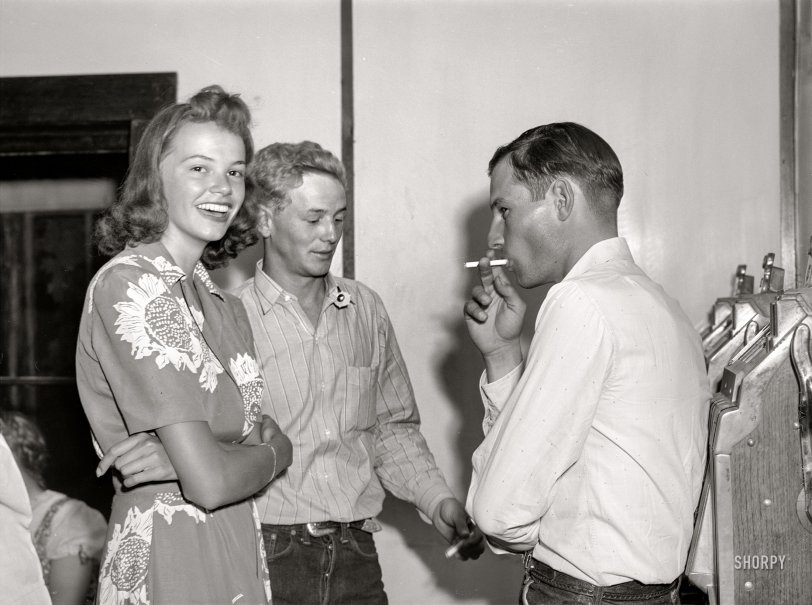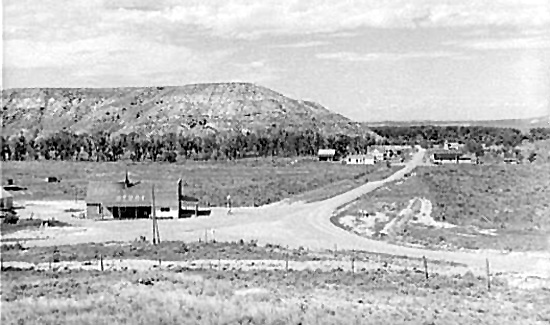


Framed or unframed, desk size to sofa size, printed by us in Arizona and Alabama since 2007. Explore now.
Shorpy is funded by you. Patreon contributors get an ad-free experience.
Learn more.

- Roll your own
- Rugged and real!
- A Charles Purcell - Mama Cass Connection
- Uncle SAAM
- Obfuscation
- One Chocolate Soldier rode away
- Victor Marquis de la Roche
- The Little House Across Way ...
- Vanderbilt Gates
- Vanderbilt Mansion
- You can still see that gate
- Withering heights for me
- So Jim,
- Top Heavy
- Re: Can't Place It.
- Bus ID
- Since you mention it
- The White Pages ?
- Moonlight Tower
- 1907?
- Fire(men) and Water
- Can't Place It
- Can anyone
- Wings
- Where's Claudette and Clark?
- Overbuilt Rolodex
- One song
- Give Me Wings Please!
- PRR
- Pinball Wizards
Printporium
Dude Girl: 1941

August 1941. "Dude girl with two cowboys at a Saturday night dance in Birney, Montana." Medium format acetate negative by Marion Post Wolcott. View full size.
Where is the
SMOKING MANDITORY sign?
[Next to the SPELLCHECK MANDATORY sign. - Dave]
What a smile!
I wonder what happened to that pretty girl with the pretty smile, and if she ended up married to a Cowboy.
AMATEUR NIGHT OUT - All dressed up
These young fellows seem to be awkwardly concentrating on looking "manly," studiously handling their Lucky Strikes to impress the gal who has been more likely charmed by one of our favorite photographers. The fellow on the right has probably just had a fine haircut for the occasion with the other seeming to be sporting a hairpiece?
Romance on the horizon
Be careful. I think the guy on your right is the man your mother warned you about.
Dude ranches were the rage as noted by the number of movies featuring singing cowboys and wives waiting to undo the knot. Birney seems an unlikely choice. Located 65 miles East of Crow Agency, Birney and the Quarter Circle U (according to Rand McNally directions), is reached by a series of unnamed and partially unpaved roads.
Here is Birney in its heyday with additional photos (from the same photo shoot) and a good write-up of the problems that forced many of them out of business.
http://www.wyomingtalesandtrails.com/birney.html

Dude looks like a lady
Wow! To use the parlance of those days, what a tomato!
However, if she were my daughter I sure wouldn´t like the way that fellow toking on the smoke is looking at her.
Like Cooke's Cookie
The next year, young English journalist Alistair Cooke was driving through Montana on the cross-country journey that would eventually become the subject of his book "The American Home Front, 1941-1942." In describing his journey through this part of the state, he wrote, "in the first year of the American war, and at harvest time thereafter, across many different landscapes, the American woman became a peasant - a peasant I noticed elsewhere with a tan and a high hairdo, and often with scarlet nails, ready for an evening of jitterbugging with the resident soldiery."
























On Shorpy:
Today’s Top 5